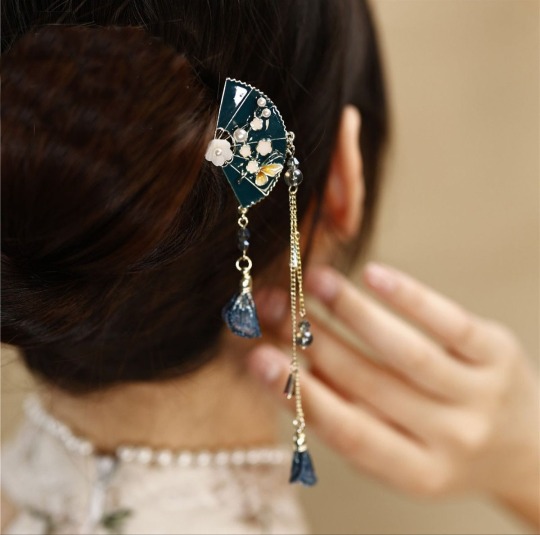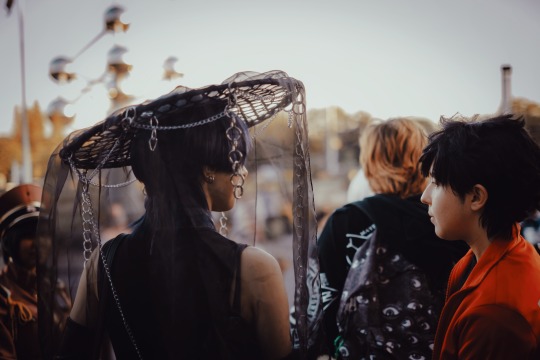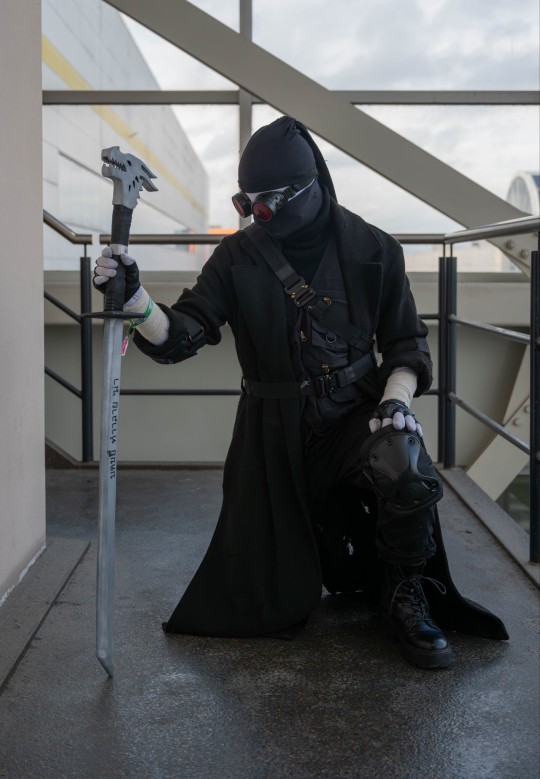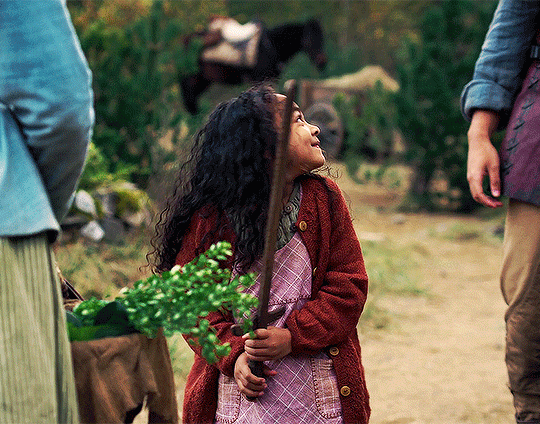#Made In Asia
Text
Chinese Fashion hairpin






Some Chinese Fashion hairpin
https://www.roselakesp.com/products/chinesefashionhairpin.html
7 notes
·
View notes
Text

#fujilove#fujifilm_xseries#fujixt5#fujix100v#streetshooters#paris#live#brussels#belgium#livephotography#photography#photographersoftumblr#streetportrait#portraitmode#vanessacoquelle#made in asia
0 notes
Text
Also I am. Constantly forgetting how fucking funny Hunter is. We never give him enough credit for how funny he is because his life is so fucked up but I swear 90% of his lines are just bit after bit after bit. He's not even trying either. Anytime he actively tries to make a joke it falls flat but if you just put him in a Scenario he'll find a way to be so over invested and yet out of touch/at odds with whatever's going on. He's so autistic
#the owl house#ramblings of a lunatic#i forget hunters character voice A Lot#plus the most recent ep is always whats most clear in my mind (so rn that's ftf) and he's obvs much more angsty in that one#idk ppl credit thanks to them as the first time Hunter was like happy and silly#but i highkey think asias was the prelude to that. like i think the events of that day are so vivid and special to hunter#precisely bc it's the first time he's interacted with witches his age in a non hostile or strained way#it's the first time on screen we see him have fun doing something that isn't deranged#yeah whatever souls are made of his and willows are the same. but more importantly her gus and the rest make him laugh#that's important for the guy canonically having the worst day of his life Every Day#part of why huntlow appealed to me initially was that it was hunters first taste of like. normal teenagedom#not the romance with willow (cause that's barely an undercurrent in asias) but flyer derby and hexside in general#and that's part of why willow and later gus r like. his safe space#and thus why it's so significant that he goes out of his way to protect (keep them safe) too#anyway enough hunter thoughts for tonight. i love him but this isn't my Brand
1K notes
·
View notes
Text

baby pictures
#toh hunter#toh fanart#the owl house#toh#these are like....the two pictures of hunter in existence before asias#besides like. the EC propaganda posters. or press photos. all with the mask on#the “badge number” comment in hunting palismen made me think that probably hunter did have some sort of id before inheriting the gg staff#no name of course. i doubt anyone knew hunter's name before luz#belos reserved badge numbers 0-100 for his grimwalkers. he was starting to sweat about it too like#hunter pops out of the ground a few years before the eclipse is supposed to happen and belos doesn't THINK he'll go through 16 more#but like. who knows how many child clones of your dead brother you'll need ya know? man's under a lot of stress
1K notes
·
View notes
Text
i don't think taako's voice is really all that high most of the time. it's higher than justin's normal voice a little, but idk, the defining quality of it isn't its pitch to me, there's something else that i don't really have the words for. but anyway i do notice that his voice gets lower and less exaggerated when he's being serious. which is interesting bc it sort of implies that the usual "taako voice" is something he puts on.
i don't really think of taako as a habitual performer. his charisma modifier is a -1, he's not this ultra smooth charming actor, and although he does tend to hide behind humor and is slow to build connections, he's also very frank with what he's about and what he wants. he goes on an entire tirade about wanting to talk about his feelings (he's multidimensional!), he never acts embarrassed or hesitant about big moments of vulnerability and caring for others (arms outstretched, "i'm not going fucking anywhere," admitting a deep fear to kravitz on their first date, spilling his tragic backstory to angus, not to mention several serious moments with lup) (and not all of these can be chalked up to "forgotten connections," either. he does have a foundation of growth with magnus and merle, even forgotten, and his conversations with lup are of course all with memories intact, but he does not have that with kravitz and angus). he's just slow to reveal all of his hidden depths, because of (understandable) trust issues. but all in all he's not nearly as closed off as i think fandom tends to portray him (which is not to say he's open, either), nor is he someone who wears a lot of masks and obscures himself. i don't think he hides his "true self."
sizzle it up was successful because of his intelligence, not his charisma. he's a natural teacher who's knowledgeable and passionate, and that was what made the show great, not his personality or performance (though i don't think those were bad. just not the primary appeal of the show. the only fan we see is ren, and she loved sizzle it up because it inspired her and taught her to cook, not because she thought taako was awesome or whatever). bc that's the thing, he's not a performer, but he is extremely adaptable. so when he's set up with a stagecoach and a show lined up, sure, he'll have a TV persona, he'll learn to be charming, he'll learn to be showy, when he's on stage. when he gets famous, he learns to like being famous, but i don't think it was really a dream of his before then. or at least not in the way people think of it. i don't think he ever wanted to be a celebrity as much as a celebrity chef or celebrity wizard. he doesn't care if people think he's pretty. he doesn't want people to adore him (before the voidfish, anyway. afterwards is a different story. there's a void where love used to be that he's desperate to fill, and adoration almost feels like it works). really what he wants is for people to appreciate his skill and intelligence and depth (and he's also very afraid of actually displaying those things. he's multidimensional).
but most of the time, when he's not literally performing for an audience, i just don't think he's putting on a show, desperate for people to like him and think he's charming. he'll do what he needs to do, say what he needs to say, be who he needs to be in any given circumstance, with strangers and antagonists, but he also drops the act when it's not necessary. or at least his performance is subtler. he performs stupidity, he performs nonchalance, he makes efforts to be funny (because he is always funny, but that's something you have to work for and always be thinking about, even when the humor is dry), he carefully does just enough to be useful, but not enough to raise expectations. he's very aware of how other people view him, but he's also perfectly okay with people thinking negatively about him—as long as they're the negative traits he wants people to see. but, he only does all those things in the beginning of the show; after a little while with magnus and merle, after a little while with the bob, he drops the act. so i guess that's the difference to me. he's adaptable out of necessity, it doesn't bleed into his entire life. i don't even really think i'd qualify it as a performance. it's more of an invisibility. he's not performing charisma to get people to like him, he's trying to lay low. but then when he actually wants people to like him, he's himself, fairly unapologetically. with the people who matter, lup, magnus and merle, kravitz, the other bob members, the other ipre crew, he's pretty comfortable with himself.
one last interesting point is that while he doesn’t seem to hesitate when it comes to actions, he does shy away from verbal displays of affection, trust, vulnerability. and the best two scenes to show that play out almost exactly the same: lup’s best day ever dinner, and dropping his disguise self with kravitz. in each, taako does something meaningful for both npcs, who then verbalize their affection for him, which taako immediately deflects with a joke.
taako drops his disguise spell for kravitz, totally honest with him, (although… i don’t tend to think the beauty sacrifice was as meaningful to taako as fandom tends to portray, i think most of his vanity is an exaggeration he intentionally cultivates, but still, it’s a vulnerable moment, he clearly cares what kravitz thinks), and kravitz tells him he loves him. to which taako replies with a joke. he does not return the words.
taako doesn’t hesitate to construct the best day ever for lup, never even questions why she’d ask. he puts it all together, cooks for her, shows her he knows her, he loves her—and then when she bears her heart to him, tells him he is her heart, all he says is, “i know,” and pulls out a bottle of vodka. of course lup knows he loves her, the whole day was an elaborate demonstration of it, but he doesn’t say anything. to be fair, it’s not exactly a typical interaction between them, taako is textually scared shitless, lup did just tell him she’s going to turn herself into an undead abomination, so he’s not exactly at his best here. but anyway.
i don’t really have anything to add to this observation, it’s just very consistent and interesting to me. taako is fairly comfortable with grand gestures, but sidesteps around words. which ties in perfectly with his identity as a chef, to me. cooking is an action, work, intention, cooking for people is an act of love, an act of connection, an act of caring, and taako’s character doesn’t fit the bill for that—except, he kinda really does.
#listened to the multidimensional scene bc i'm writing about mongooses. it made me think#also i'm learning so much about mongooses and also weather systems in south asia. not strictly necessary but interesting#mine#taako#taz taako#taz balance#the adventure zone#analysis#also his cha mod is -1 in gerblins its possible he put ASIs into it later on but it still wouldnt be very high#his int and dex are his high scores
141 notes
·
View notes
Text
So, Where to Watch AMC Interview with the Vampire?

Surely you have seen gifs of AMC Interview with the Vampire and wonder where you can watch it. Of course you can 🏴☠️, but unfortunately in the world of streaming, numbers matter to keep the show afloat. So, here is Where to Watch IWTV aka WtW IWTV. This list will be updated from time to time 😉
WATCH PILOT EPISODE ON YOUTUBE FOR FREE (USA or with 🌐)
youtube
Listing STREAMING services only. Ctrl+F to find your country.
Free (ad-supported or otherwise): 🆓
VPN-friendly: 🌐
Need to make free account (with fake address): 📝 (details under the cut)
Season 2 release confirmed: ✨
• AMC+ : USA✨, Canada, Australia✨, New Zealand✨, Spain✨, India
AMC+ is also available as a "channel" on Amazon Prime✨, Apple TV, Roku or YouTube TV
• ABC iview 🆓 🌐📝 : Australia
• BBC iPlayer 🆓 🌐📝 : UK
• Canal+ ✨: Austria (S1 on April 26, S2 on May 13)
• MagentaTV+ ✨: Germany (S1 and S2 on May 12)
• OSN+: Middle Eastern and North Africa
• Paramount+: France (S1 on May 10, 2024, S2 unconfirmed)
• Sky Go: Ireland, UK
• TVNZ+ 🆓 📝 (haven't tried with 🌐): New Zealand
New releases on cable:
• AMC Portugal: S1 on April 22, S2 unconfirmed
• AMC Poland: S2 on June 20
Disclaimer: I don't condone the use of VPN and fake address. HOWEVER, the series isn't available in almost most part of this world 😭. So, this is done with the purpose of giving the series the views it deserves instead of giving them to 🏴☠️. If your country is listed above, please support the show 🙏
For BBC: UK VPN on, sign up, Google UK zip code and add it, yes to TV license. You can turn VPN off after the episode loads.
For ABC iview: Australia VPN on, sign up, pick Overseas. You can turn VPN off after episode loads. Works on the app as well.
Check reply for VPN I used.
Feel free to reply or message me if you fail to stream it and if there's any info I missed or got wrong. Also, feel free to share this list with anyone!
Special thanks to Ari for always keeping us updated with the news on the show
#where to watch iwtv#interview with the vampire#iwtv#amc iwtv#amc interview with the vampire#jacob anderson#sam reid#delainey hales#assad zaman#eric bogosian#ben daniels#roxanne duran#AMC should hire me#moi.txt#Youtube#i made this so AMC remember there's a continent called Asia sooner
133 notes
·
View notes
Text
MAN THESE PHOTOSHOOT PHOTOS ARE MAKING SCREAM /pos
📸: Pwody

#madness combat#madcom#madness combat cosplay#hank j wimbleton cosplay#hank j wimbleton#heroes made in asia#yooo dragon sword fully shown lets gooo
63 notes
·
View notes
Text

funny enough i've never drawn male nepal and sri lanka
#hws sri lanka#hws nepal#aph sri lanka#aph nepal#hetalia#hetalia oc#hws south asia#idk. ive been feeling uninspired about their designs for a year now#also yeah i recycled one of lebanon's old hairstyles for nepal lmao cause i still liked it but i thought it didn't fit the former#plus it was too similar to jordan#it works because this style is just basically a short hair ver of fem nepal's hair down#almost all of south asia has gotten a face lift these this past year and a half.....maldives and bhutan are next#i made south asia in like 2018 or 2019#isnt that crazy?#i think i'm particularly fond of my south asian designs despite starting with SEA because they basically grew up with me#as the 2nd region i designed
177 notes
·
View notes
Text
A family court in Indore, Madhya Pradesh has directed a woman to return to her husband's home with immediate effect and principal judge NP Singh observed that wearing the ritualistic 'sindoor' (vermillion) was the duty of a (Hindu) woman as it demonstrates that she is married, and refusing to wear it is "kind of cruelty".
The hearing included a plea of a man seeking restoration of his "rights" under the Hindu Marriage Act after his wife walked out of the marriage five years ago. The woman who had left and wanted a divorce, accused her husband of physical and mental harassment for dowry.
Source
#the hindu marriage act allows the husband “rights” over his wife's body and autonomy#acche din is here everyone! modi has made the country sooo safe for women#why is it that all these horror stories are always from the orange belt#another proof that laws are made by men and serves men first and foremost#india#south asia#desi tumblr#desiblr#anti hindutva#desi
47 notes
·
View notes
Text
serious topic shift bc whilst digging for genshin redesigns i was reminded about how much you guys HATE black people (& its BHM so you guys are more rampant than ever w this shit).
blackwashing is not, & will never be a concept, nor a word, that exists or makes any logical sense. contrary to how all of you love to slap “washing” at the end of any word to equate it to whitewashing, that just… isn’t how it works.
whitewashing IS the word that it is because whiteness is seen as clean. Ie: you’re washing away everything that was dirty about a topic. From whitewashing historically black characters, to removing and rewriting every part of history to make white people look like the good guys in relation to their black counterparts.
you cannot slap ‘black’ onto that and have it mean the same thing. bc even in 2024, everything in relation to blackness is still considered to be dirty. (yes, this especially means your favourite east asian companies and content creators. i know how much you guys love to give them a special pass to hate on black skin just because they’re east asian).
so feel however you want abt black edits (or literally just redesigns that give these games any sort of skin diversity. because how are you recreating nations from all around the world yet only have 4 characters that are grey at best); but the moment you use ‘blackwashing’ or in any way equate it to whitewashing, anything you have to say is invalid. because its clear that the literate part of your brain is null & not functioning.
#/nbh#ik im talking abt hyv specifically but this goes for all fandoms tbh#also btw#there’s no such thing as ‘asian rep’ in a media made IN east asia. for east asians. by east asians#at that point its just a game#just as there’s not ‘american rep’ in american media. made in america. BY americans for americans
59 notes
·
View notes
Text




Maximilian Mittelstädt (11')
Niclas Füllkrug (85')
Germany | 2 - 1 | Netherlands
2024 International Friendly
#we are winning euro... africa cup of nations... asia cup... copa america... you freaking name it#germany nt#german nt#football#yep: I made this#maximilian mittelstädt#niclas füllkrug
37 notes
·
View notes
Text
Welcome to Rose Lake Shop 🌹
One night, I dreamed that the lake was full of roses, so I used the name "Rose Lake" as the name of my website 🌹
https://www.roselakesp.com/
In my page, have some products from Asia, our products is good and cheap 🎁
Enjoy your shopping🛍

https://www.roselakesp.com/
2 notes
·
View notes
Text
my oldest friend from canada visited me here for a couple weeks earlier in the month and it was her first time outside of north america and she wanted to see the place i'm from that she's heard so much about all our lives and she was telling me that all the white people she knows (she's also white) were confused when she told them she's going to malaysia they were like "why are you going there? what even is there lol" and they had no idea where it even is, but whenever she told asians she was going to malaysia the reaction was one of excitement and celebration. and she was really nervous travelling so far and when she was here she was quiet a lot just taking everything in, and asking me questions about everything, history and culture and my family etc and i answered as much as i could, and after she left she told me she understands why i care so much for this place, why it matters to me, because it matters to her now too, and she feels sad because she misses it already, and that she wants to come back some day. and that meant so much to me, and i feel very lucky to have her as my friend. that she took this so seriously and to heart and that she understands in a very real sense why i miss it so much when i'm in canada, and to feel known and understood in a greater way by her. i love her very much
#she also told me she genuinely prefers malaysia to singapore (a woman of taste)#seeing her in asia and how she spoke to people and really genuinely tried to pick up some bahasa...#i respect her greatly but it made me respect her even more#and only grew my appreciation for her
197 notes
·
View notes
Text
Went to heroes made in asia today!! It was soo much fun haha
I went as Kai from YTTD and 2 (TWO) whole people recognized me which was very cool because I thought the fandom was so dead no one would recognize the character.



42 notes
·
View notes
Text


THE MOST PERFECT BABYGIRL |The Wheel of Time 2x3
#Wheel of time#asia-sky fenty#young elnore <3#wot show#wot show spoilers#wot prime show#made by moth#nynaeve x lan#lan x nynaeve#and their babygirl#wot s02e03#elnore
108 notes
·
View notes
Text
Atrocities US committed against ASIA
Between 1996-2006, The US has given money and weapons to royalist forces against the nepalese communists in the Nepalese civil war. ~18,000 people have died in the conflict. In 2002, after another civil war erupted, President George W. Bush pushed a bill through Congress authorizing $20 million in military aid to the Nepalese government.
In 1996, after receiving incredibly low approval ratings, the US helped elect Boris Yeltsin, an incompetent pro-capitalist independent, by giving him a $10 Billion dollar loan to finance a winning election. Rather than creating new enterprises, Yeltsin’s democratization led to international monopolies hijacking the former Soviet markets, arbitraging the huge difference between old domestic prices for Russian commodities and the prices prevailing on the world market. Much of the Yeltsin era was marked by widespread corruption, and as a result of persistent low oil and commodity prices during the 1990s, Russia suffered inflation, economic collapse and enormous political and social problems that affected Russia and the other former states of the USSR. Under Yeltsin, Between 1990 and 1994, life expectancy for Russian men and women fell from 64 and 74 years respectively to 58 and 71 years. The surge in mortality was “beyond the peacetime experience of industrialised countries”. While it was boom time for the new oligarchs, poverty and unemployment surged; prices were hiked dramatically; communities were devastated by deindustrialisation; and social protections were stripped away.
In the 1970s-80s, wikileaks cables revealed that the US covertly supported the Khmer Rouge in their fight against the Vietnamese communists. Annual support included an end total of ~$215M USD, food aid to 20-40k Khmer Rouge fighters, CIA advisors in several camps, and ammunition.
In December 1975, The US supplied the weaponry for the Indonesian invasion of East Timor. This incursion was launched the day after U.S. President Gerald Ford and Secretary of State Henry Kissinger had left Indonesia where they had given President Suharto permission to use American arms, which under U.S. law, could not be used for aggression. Daniel Moynihan, U.S. ambassador to the UN. said that the U.S. wanted “things to turn out as they did.” The result was an estimated 200,000 dead out of a population of 700,000. Sixteen years later, on November 12, 1991, two hundred and seventeen East Timorese protesters in Dili, many of them children, marching from a memorial service, were gunned down by Indonesian Kopassus shock troops who were headed by U.S.- trained commanders Prabowo Subianto (son in law of General Suharto) and Kiki Syahnakri. Trucks were seen dumping bodies into the sea.
In 1975 Australian Constitutional Crisis, the CIA helped topple the democratically elected, left-leaning government of Prime Minister Gough Whitlam, by telling Governor-General, John Kerr, a longtime CIA collaborator, to dissolve the Whitlam government.
In 2018 after the release of a suppressed ISC (International Scientific Commission) report, and the release of declassified CIA communications daily reports in 2020, it was revealed that the US used germ warfare in the Korean war, 2. Many of these attacks involved the dropping of insects or small mammals infected with viruses such as anthrax, plague, cholera, and encephalitis. After discovering evidence of germ warfare, China invited the ISC headed by famed British scientist Joseph Needham, to investigate, but the report was suppressed for over 70 years.
Between 1963 and 1973, The US dropped ~388,000 tons of napalm bombs in vietnam, compared to 32,357 tons used over three years in the Korean War, and 16,500 tons dropped on Japan in 1945. US also sprayed over 5 million acres with herbicide, in Operation Ranch Hand, in a 10 year campaign to deprive the vietnamese of food and vegetation cover.
In 1971 in Pakistan, an authoritarian state supported by the U.S., brutally invaded East Pakistan in the Indo-Pakistani war of 1971. The war ended after India, whose economy was staggering after admitting about 10 million refugees, invaded East Pakistan (now Bangladesh) and defeated the West Pakistani forces. The US gave W. pakistan 411 million provided to establish its armed forces which spent 80% of its budget on its military. 15 million in arms flowed into W. Pakistan during the war. Between 300,000 to 3 million civilians were killed, with 8-10 million refugees fleeing to India.
In 1970, In Cambodia, The CIA overthrows Prince Sihanouk, who is highly popular among Cambodians for keeping them out of the Vietnam War. He is replaced by CIA puppet Lon Nol, whose forces suppressed the large-scale popular demonstrations in favour of Sihanouk, resulting in several hundred deaths. This unpopular move strengthens once minor opposition parties like the Khmer Rouge (another CIA supported group), who achieve power in 1975 and massacres ~2.5 million people. The Khmer Rouge, under Pol Pot, carried out the Cambodian Genocide, which killed 1.5-2M people from 1975-1979.
In 1969, The US initiated a secret carpet bombing campaign in eastern Cambodia, called, Operation Menu, and Operation Freedom Deal in 1970. An estimated 40,000 - 150,000 civilians were killed. Nixon lied about this campaign, but was later exposed, and one of the things that lead to his impeachment.
US dropped large amounts of Agent Orange, an herbicide developed by monsanto and dow chemical for the department of defense, in vietnam. Its use, in particular the contaminant dioxin, causes multiple health problems, including cleft palate, mental disabilities, hernias, still births, poisoned breast milk, and extra fingers and toes, as well as destroying local species of plants and animals. The Red Cross of Vietnam estimates that up to 1 million people are disabled or have health problems due to Agent Orange.
US Troops killed between 347 and 504 unarmed civilians, including women, children, and infants, in South Vietnam on March, 1968, in the My Lai Massacre. Some of the women were gang-raped and their bodies mutilated. Soldiers set fire to huts, waiting for civilians to come out so they could shoot them. For 30 years, the three US servicemen who tried to halt the massacre and rescue the hiding civilians were shunned and denounced as traitors, even by congressmen.
In 1967, the CIA helped South Vietnamese agents identify and then murder alleged Viet Cong leaders operating in villages, in the Phoenix Program. By 1972, Phoenix operatives had executed between 26,000 and 41,000 suspected NLF operatives, informants and supporters.
In 1965, The CIA overthrew the democratically elected Indonesian leader Sukarno with a military coup. The CIA had been trying to eliminate Sukarno since 1957, using everything from attempted assassination to sexual intrigue, for nothing more than his declaring neutrality in the Cold War. His successor, General Suharto, aided by the CIA, massacred between 500,000 to 1 million civilians accused of being communist, in the Indonesian mass killings of 1965-66. The US continued to support Suharto throughout the 70s, supplying weapons and planes.
Between 1964 and 1973, American pilots flew 580,000 attack sorties over Laos, an average of one planeload of bombs every eight minutes for almost a decade. By the time the last US bombs fell in April 1973, a total of 2,093,100 tonnes of ordnance had rained down on this neutral country. To this day, Laos, a country of just 7 million people, retains the dubious accolade of being the most heavily bombed country in the world per capita.
From the 1960s onward, the US supported Filipino dictator Ferdinand Marcos. The US provided hundreds of millions of dollars in aid, which was crucial in buttressing Marcos’s rule over the years. The estimated number of persons that were executed and disappeared under President Fernando Marcos was over 100,000. After fleeing to hawaii, marco was suceeded by the widow of an opponent he assasinated, Corazon aquino.
Starting in 1957, in the wake of the US-backed First Indochina War, The CIA carries out approximately one coup per year trying to nullify Laos’ democratic elections, specifically targeting the Pathet Lao, a leftist group with enough popular support to be a member of any coalition government, and perpetuating the 20 year Laotian civil war. In the late 50s, the CIA even creates an “Armee Clandestine” of Asian mercenaries to attack the Pathet Lao. After the CIA’s army suffers numerous defeats, the U.S. drops more bombs on Laos than all the U.S. bombs dropped in World War II. A quarter of all Laotians will eventually become refugees, many living in caves. This was later called a “secret war,” since it occurred at the same time as the Vietnam War, but got little press. Hundreds of thousands were killed.
In 1955, the CIA provided explosives, and aided KMT agents in an assassination attempt against the Chinese Premier, Zhou Enlai. KMT agents placed a time-bomb on the Air India aircraft, Kashmir Princess, which Zhou was supposed to take on his way to the Bandung Conference, an anti-imperialist meeting of Asian and African states, but he changed his travel plans at the last minute. Henry Kissinger denied US involvement, even though remains of a US detonator were found. 16 people were killed.
From 1955-1975, the US supported French colonialist interests in Vietnam, set up a puppet regime in Saigon to serve US interests, and later took part as a belligerent against North Vietnam in the Vietnam War. U.S. involvement escalated further following the 1964 Gulf of Tonkin incident, which was later found to be staged by Lyndon Johnson. The war exacted a huge human cost in terms of fatalities (see Vietnam War casualties). Estimates of the number of Vietnamese soldiers and civilians killed vary from 966,000 source to 3.8 million.source Some 240,000–300,000 Cambodians,source23 20,000–62,000 Laotians,4 and 58,220 U.S. service members also died in the conflict, with a further 1,626 missing in action. Unexploded bomb continue to kill civilians for years afterward.
In the summer of 1950 in South Korea, anticommunists aided by the US executed at least 100,000 people suspected of supporting communism, in the Bodo League Massacre. For four decades the South Korean government concealed this massacre. Survivors were forbidden by the government from revealing it, under suspicion of being communist sympathizers. Public revelation carried with it the threat of torture and death. During the 1990s and onwards, several corpses were excavated from mass graves, resulting in public awareness of the massacre.
In 1984, documents were released showing that Eisenhower authorized the use of atomic weapons on North Korea, should the communists renew the war in 1953. The 2,000 pages released show the high level of planning and the detail of discussion on possible use of these weapons, and Mr. Eisenhower’s interest in overcoming reluctance to use them.
In the beginning of the Korean war, US Troops killed ~300 South Korean civilians in the No Gun Ri massacre, revealing a theater-wide policy of firing on approaching refugee groups. Trapped refugees began piling up bodies as barricades and tried to dig into the ground to hide. Some managed to escape the first night, while U.S. troops turned searchlights on the tunnels and continued firing, said Chung Koo-ho, whose mother died shielding him and his sister. No apology has yet been issued.
The US intervened in the 1950-53 Korean Civil War, on the side of the south Koreans, in a proxy war between the US and china for supremacy in East Asia. South Korea reported some 373,599 civilian and 137,899 military deaths, the US with 34,000 killed, and China with 114,000 killed. Overall, the U.S. dropped 635,000 tons of bombs—including 32,557 tons of napalm—on Korea, more than they did during the whole Pacific campaign of World War II. The US killed an estimated 1/3rd of the north Korean people during the war. The Joint Chiefs of staff issued orders for the retaliatory bombing of the People’s republic of China, should south Korea be attacked. Deadly clashes have continued up to the present day.
From 1948-1949, the Jeju uprising was an insurgency taking place in the Korean province of Jeju island, followed by severe anticommunist suppression of the South Korean Labor Party in which 14-30,000 people were killed, or ~10% of the island’s population. Though atrocities were committed by both sides, the methods used by the South Korean government to suppress the rebels were especially cruel. On one occasion, American soldiers discovered the bodies of 97 people including children, killed by government forces. On another, American soldiers caught government police forces carrying out an execution of 76 villagers, including women and children. The US later entered the Korean civil war on the side of the South Koreans.
In 1949 during the resumed Chinese Civil War, the US supported the corrupt Kuomintang dictatorship of Chiang Kaishek to fight against the Chinese Communists, who had won the support of the vast majority of peasant-farmers and helped defeat the Japanese invasion. The US strongly supported the Kuomintang forces. Over 50,000 US Marines were sent to guard strategic sites, and 100,000 US troops were sent to Shandong. The US equipped and trained over 500,000 KMT troops, and transported KMT forces to occupy newly liberated zones as well as to contain Communist-controlled areas. American aid included substantial amounts of both new and surplus military supplies; additionally, loans worth hundreds of millions of dollars were made to the KMT. Within less than two years after the Sino-Japanese War, the KMT had received $4.43 billion from the US—most of which was military aid.
The U.S. installed Syngman Rhee,a conservative Korean exile, as President of South Korea in 1948. Rhee became a dictator on an anti-communist crusade, arresting and torturing suspected communists, brutally putting down rebellions, killing 100,000 people and vowing to take over North Korea. Rhee precipitated the outbreak of the Korean War and for the allied decision to invade North Korea once South Korea had been recaptured. He was finally forced to resign by mass student protests in 1960.
Between 1946 and 1958, the US tested 23 nuclear devices at Bikini Atoll, using the native islanders and their land as guinea pigs for the effects of nuclear fallout. Significant fallout caused widespread radiological contamination in the area, and killed many islanders. A survivor stated, “What the Americans did was no accident. They came here and destroyed our land. They came to test the effects of a nuclear bomb on us. It was no accident.” Many of the islanders exposed were brought to the US Argonne National laboratory, to study the effects. Afterwards the islands proved unsuitable to sustaining life, resulting in starvation and requiring the residents to receive ongoing aid. Virtually all of the inhabitants showed acute symptoms of radiation syndrome, many developing thyroid cancers, Leukimia, miscarriages, stillborn and “jellyfish babies” (highly deformed) along with symptoms like hair falling out, and diahrrea. A handful were brought to the US for medical research and later returned, while others were evacuated to neighboring Islands. The US under LBJ prematurely returned the majority returned 3 years later, to further test how human beings absorb radiation from their food and environment. The islanders pleaded with the US to move them away from the islands, as it became clear that their children were developing deformities and radiation sickness. Radion levels were still unacceptable. The United States later paid the islanders and their descendants 25 million in compensation for damage caused by the nuclear testing program. A 2016 investigation found radiation levels on Bikini Atoll as high as 639 mrem yr−1, well above the established safety standard threshold for habitation of 100 mrem yr−1. Similar tests occurred elsewhere in the Marshall Islands during this time period. Due to the destruction of natural wealth, Kwajalein Atoll’s military installation and dislocation, the majority of natives currently live in extreme poverty, making less than 1$ a day. Those that have jobs, mostly work at the US military installation and resorts. Much of this is detailed in the documentary, The Coming War on China (2016).
After the Japanese surrender in 1945, Douglas MacArthur pardoned Unit 731, a Japanese biological experimentation center which performed human testing of biological agents against Chinese citizens. While a series of war tribunals and trials was organized, many of the high-ranking officials and doctors who devised and respectively performed the experiments were pardoned and never brought to justice. As many as 12,000 people, most of them Chinese, died in Unit 731 alone and many more died in other facilities, such as Unit 100 and in field experiments throughout Manchuria. One of the experimenters who killed many, microbiologist Shiro Ishii, later traveled to the US to advise on its bioweapons programs. In the final days of the Pacific War and in the face of imminent defeat, Japanese troops blew up the headquarters of Unit 731 in order to destroy evidence of the research done there. As part of the cover-up, Ishii ordered 150 remaining subjects killed.
In 1945 during the month-long Battle of Manila, the US in deciding whether to attack Manila (then under Japanese occupation) with ground troops, decided instead to use indiscriminate carpet-bombing, howitzers, and naval bombardment, killing an estimated 100,000 people. The casualty figures show the US’s regard for filipino civilian life: 1,010 Americans, 16,665 Japanese and 100,000 to 240,000 civilians were killed. Manila became, alongside Berlin, and Warsaw, one of the most devastated cities of WW2.
US Troops committed a number of rapes during the battle of Okinawa, and the subsequent occupation of Japan. There were 1,336 reported rapes during the first 10 days of the occupation of Kanagawa prefecture alone.1 American Occupation authorities imposed wide-ranging censorship on the Japanese media, including bans on covering many sensitive social issues and serious crimes such as rape committed by members of the Occupation forces.
From 1942 to 1945, the US military carried out a fire-bombing campaign of Japanese cities, killing between 200,000 and 900,000 civilians. One nighttime fire-bombing of Tokyo took 80,000 lives. During early August 1945, the US dropped atomic bombs on Hiroshima and Nagasaki, killing ~130,000 civilians, and causing radiation damage which included birth defects and a variety of genetic diseases for decades to come. The justification for the civilian bombings has largely been debunked, as the entrance of Russia into the war had already started the surrender negotiations earlier in 1945. The US was aware of this, since it had broken the Japanese code and had been intercepting messages during for most of the year. The US ended up accepting a conditional surrender from Hirohito, against which was one of the stated aims of the civilian bombings. The dropping of the atomic bomb is therefore seen as a demonstration of US military supremacy, and the first major operation of the Cold War with Russia.
In 1918, the US took part in the allied intervention in the Russian civil war, sending 11,000 troops to the in the Arkhangelsk and Vladivostok regions to support the anti-bolshevik, monarchist, and largely anti-semitic White Forces.
In 1900 in China, the US was part of an Eight-Nation Alliance that brought 20,000 armed troops to China, to defeat the Imperial Chinese Army, in the the Boxer Rebellion, an anti-imperialist uprising.
In 1899, after a popular revolution in the Philippines to oust the Spanish imperialists, the US invaded and began the Phillipine-American war. The US military committed countless atrocities, leaving 200,000 Filipinos dead. Jacob H Smith killed between 2,500 to 50,000 civilians, His orders included, “kill everyone over the age of ten” and make the island “a howling wilderness.”
Throughout the 1800s, US settlers engaged in a genocide of native Hawaiians. The native population decreased from ~ 400k in 1789, to 40k by 1900, due to colonization and disease. In 1883, the US engineered the overthrow of Hawaii’s native monarch, Queen Lili’uokalani, by landing two companies of US marines in Honolulu. Due to the Queen’s desire “to avoid any collision of armed forces, and perhaps the loss of life” for her subjects and after some deliberation, at the urging of advisers and friends, the Queen ordered her forces to surrender. Hawaii was initially reconstituted as an independent republic, but the ultimate goal of the US was the annexation of the islands to the United States, which was finally accomplished in 1898. After this, the Hawaiian language was banned, English replaced it as the official language in all institutions and schools. The US finally apologized in 1993, but no land has been returned.
#japan#china#south korea#asia#kim jong un#russia#north korea#putin#anti capitalism#leftism#socialism#anarchy#communism#us history#american history#imperialism#ronald reagan#us politics#made in usa#america#maga#government#political#xitter#gop#late stage capitalism#classism#current events#economics#capitalism
75 notes
·
View notes